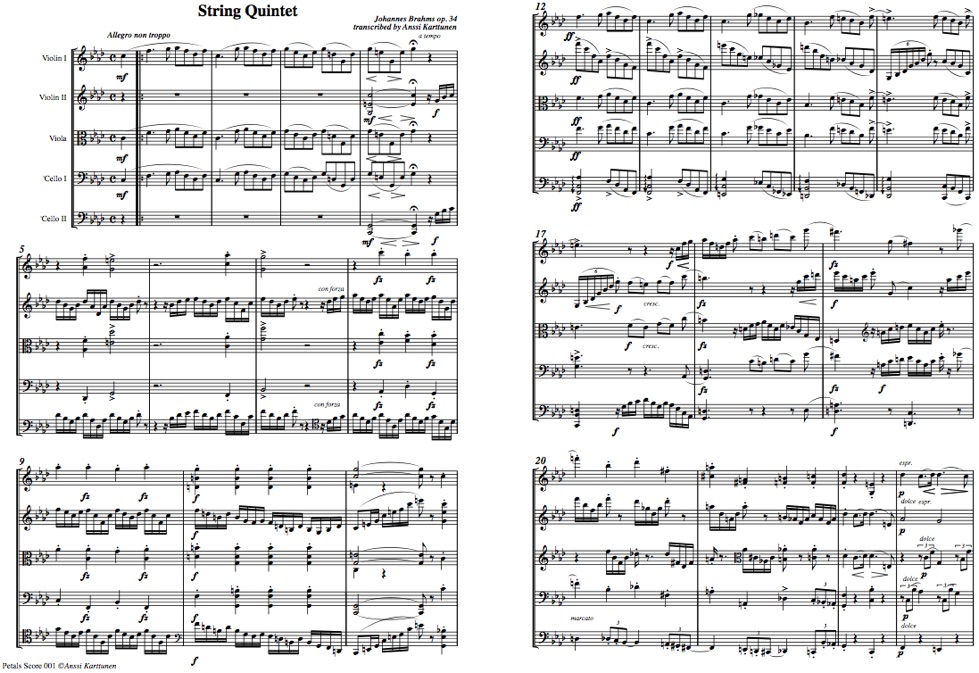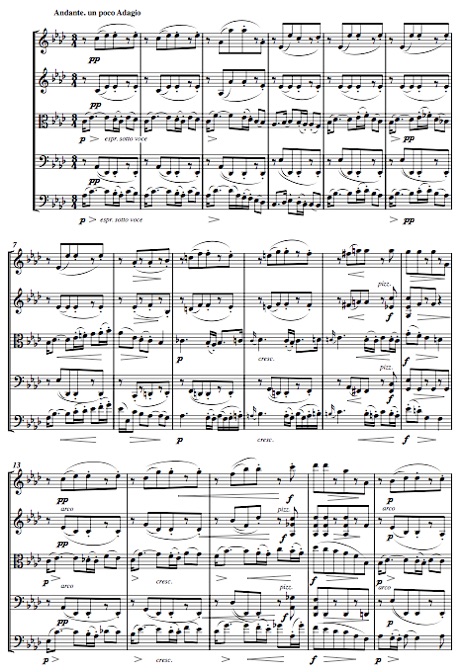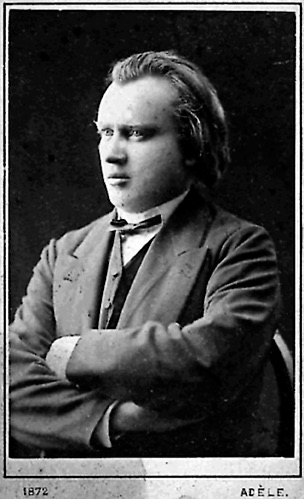Transcribing Brahms
The Piano Quintet has always been one of my very favourite pieces of music but I have come to realise that many musicians consider it a "flawed masterpiece". When I once played it in the same concert with the g-minor Piano Quartet I started to understand why someone would think so: While in the Quartet one has the feeling that Brahms is a perfect master of his ensemble, the Quintet does not have the same feeling of inevitability, one could imagine the piece written for some other ensemble. I still feel the greatness of the music, but do admit that there is something very different about this piece than most of his chamber music.
The fact that Brahms chose to use two cellos in the original String Quintet is a sign that he had some kind of relation to the Schubert C-major quintet in his mind. There aren't any direct musical quotes from the Schubert Quintet, but in this version one becomes very aware of several textural similarities which naturally will be impossible to see in the Piano Quintet version. Finding this relation was another reason for making this transcription.
Neither of the existing versions is quite as inventive in their use of instruments as one would expect from an original piece by Brahms, even at 29. This is evident if one compares the piece with the the three Piano Quartets or the String Quintets with two violas, which could never have been written for another ensemble. In the Piano Quintet the piano is treated in a much more straightforward way than what he usually does.
There is hardly anything aside some doublings in the piano part that would be impossible to play with five string players. When I noticed this, I became intrigued to try whether it would be possible for me to reconstruct it to the original string quintet format and if that would answer some of the questions concerning the piece. I was aware that an earlier version had been made by Sebastian H. Brown during his service in the World War II, but as I couldn’t get hold of a score of it soon enough to satisfy my curiosity I set off to work on my own version. I based my version on the Breitkopf & Härtel original edition of the Piano Quintet.
At first I just experimented on whether this reconstruction/transcription would make sense at all and saw that it was less impossible that I would have thought. Even if all the important parts can be easily divided between five string players, it doesn’t mean that the reconstructing of the String Quintet was an easy task. One has to re-distribute all the parts to keep the writing in style with Brahms’s string writing. In the end, all the parts undergo major changes and the new second cello part is a combination of the old cello, piano left hand and sometimes viola parts. It becomes the new bass line of the piece.











